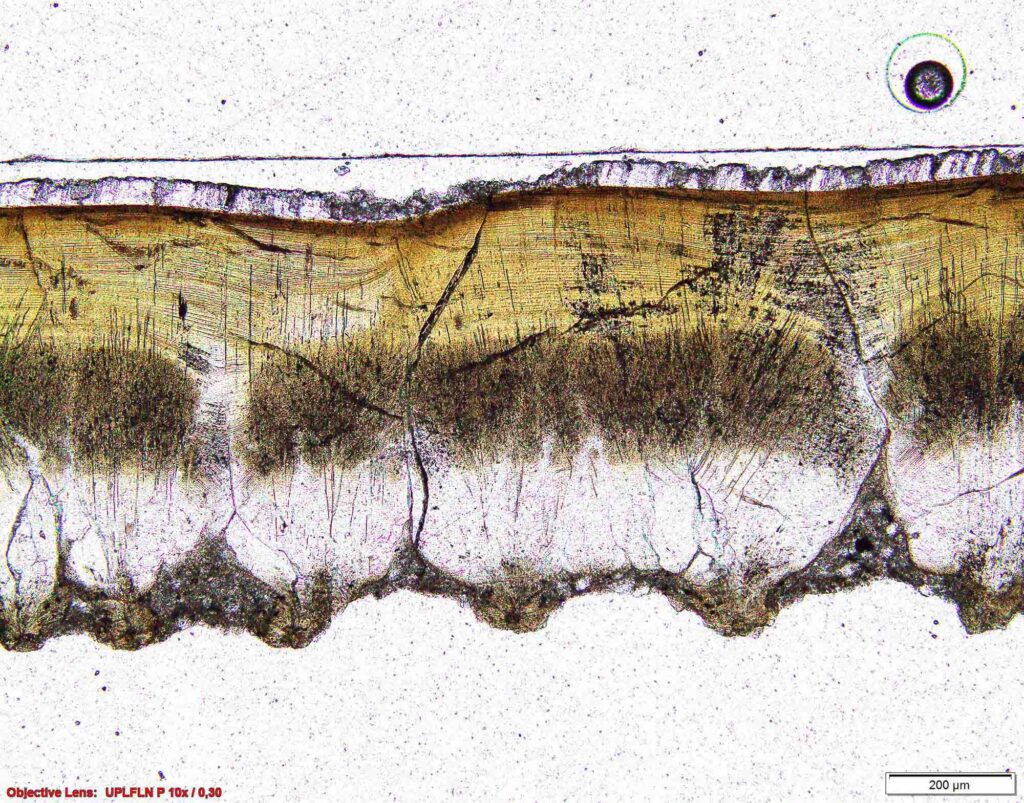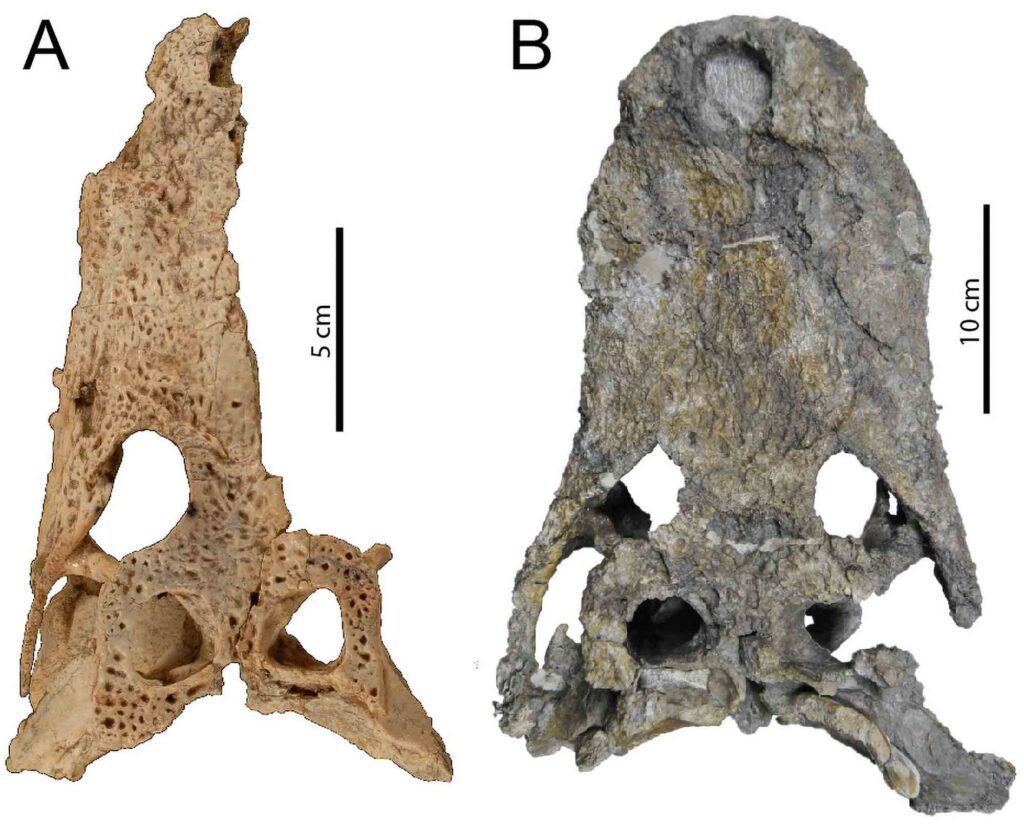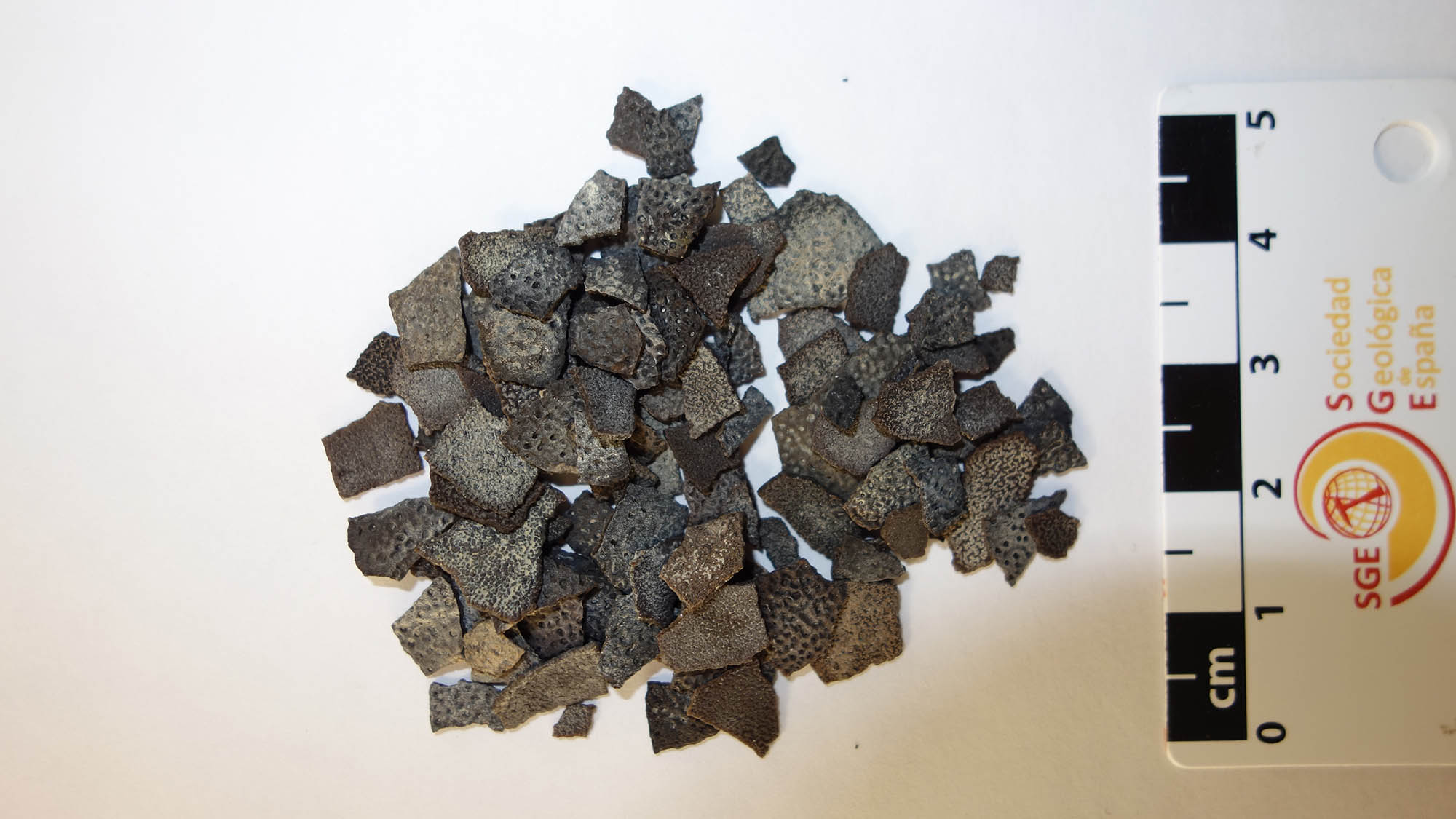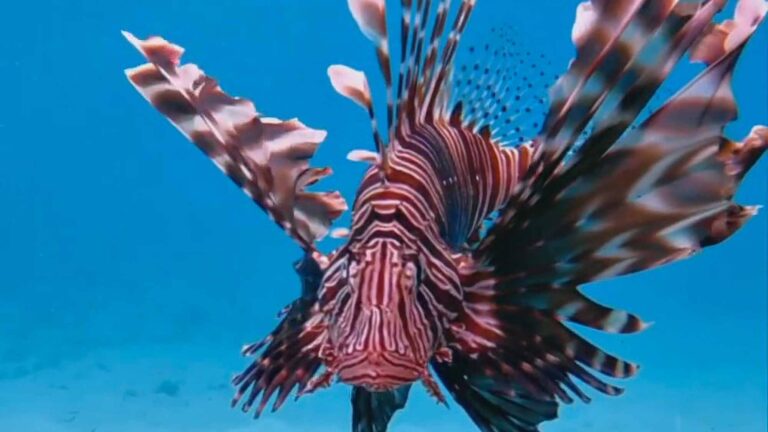Palaeontologists have discovered a new species of crocodile that lived with the last dinosaurs and that laid the thickest eggs on record.
The group of palaeontologists from the University of Zaragoza in Spain, working with colleagues at the NOVA University Lisbon and the Catalan Institute of Human Palaeoecology and Social Evolution, discovered eggshell belonging to the new species of crocodile in the Ribagorza area in the province of Huesca, in north-eastern Spain.
The research has been recently published in the academic journal Historical Biology and the scientists detail how they recovered more than 300 eggshell fragments near Biascas de Obarra, in the municipality of Beranuy, in Huesca.
Newsflash obtained a statement from the University of Zaragoza on Wednesday, 31st August saying: “The fragments found correspond to the thickest crocodile shells that have been found in the fossil record worldwide.

(Manuel Perez Pueyo/Newsflash)
“Its discovery increases the palaeontological wealth of the Ribagorza region and reaffirms its importance worldwide to study the end of the Cretaceous extinction.”
The expert said that the eggshells date back to the Upper Cretaceous period and that the “fragments were part of the eggs laid by crocodiles that lived with the last Iberian dinosaurs at the end of the Cretaceous.”
They added that they”appear in the sedimentary rocks of the Tremp Formation, which outcrops in this sector of the Pyrenees. The most recent dates of these outcrops place these rocks within the last 250,000 years of the Cretaceous, very close in time to the Cretaceous/Paleogene boundary, when there was a meteorite impact against planet Earth and the extinction of the dinosaurs.”
They said that the new species has been named Pachykrokolithus excavatum. In the Historical Biology article, the experts compared the fragments to “other crocodile egg shells, both current and fossil from other areas of the world, such as Portugal or the United States.”
They said that this was how they were able to confirm that these new eggshells are the “thickest crocodile eggshells that exists in the fossil record.”
The Historical Biology article, titled ‘A new crocodylomorph related ootaxon from the late Maastrichtian of the Southern Pyrenees (Huesca, Spain)’, was published on 21st July 2022, with the University only issuing a statement about the discovery yesterday (31st August).
The article was authored by Miguel Moreno-Azanza, Manuel Perez-Pueyo, Eduardo Puertolas-Pascual, Carmen Nunez-Lahuerta, Octavio Mateus, Blanca Bauluz, Beatriz Badenas and Jose Ignacio Canudo.

(Eduardo Puertolas Pascual/Newsflash)
To find out more about the author, editor or agency that supplied this story – please click below.
Story By: Joseph Golder, Sub-Editor: Marija Stojkoska, Agency: Newsflash
The Ananova page is created by and dedicated to professional, independent freelance journalists. It is a place for us to showcase our work. When our news is sold to our media partners, we will include the link here.




